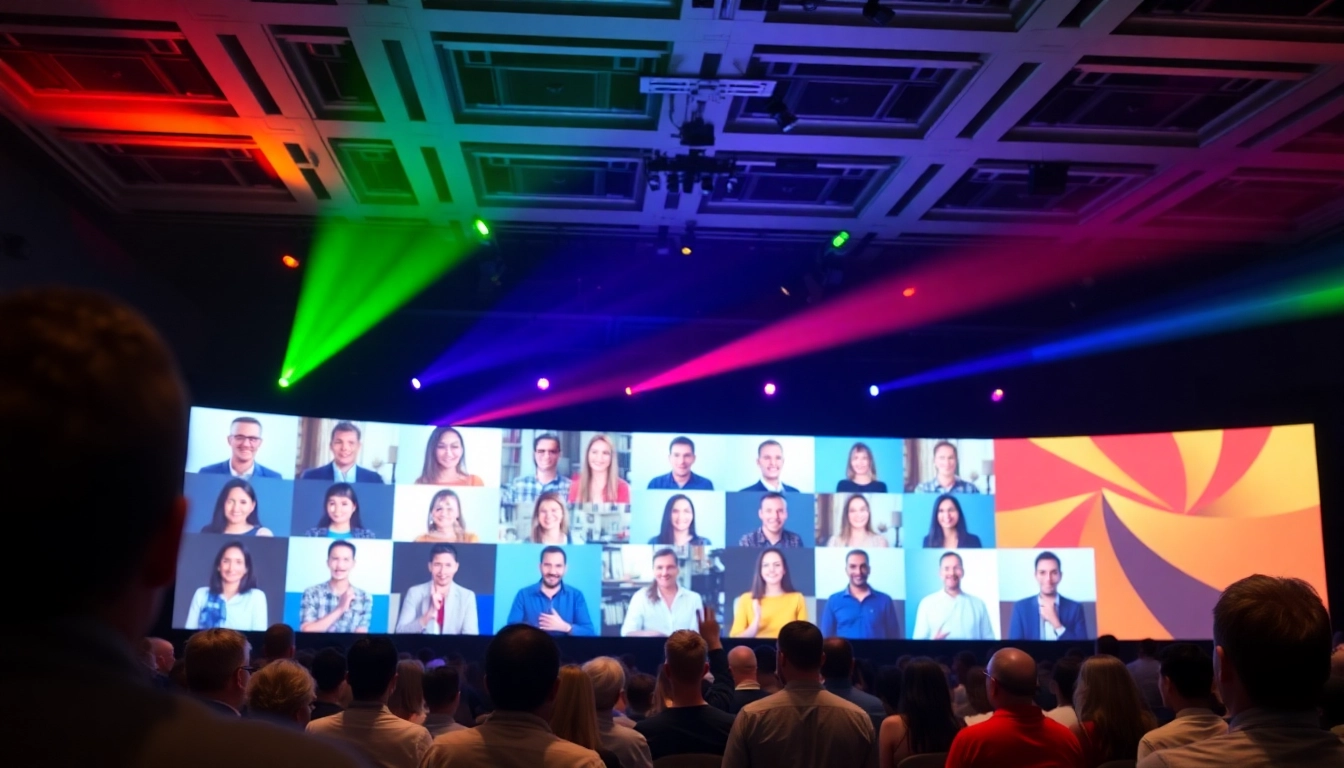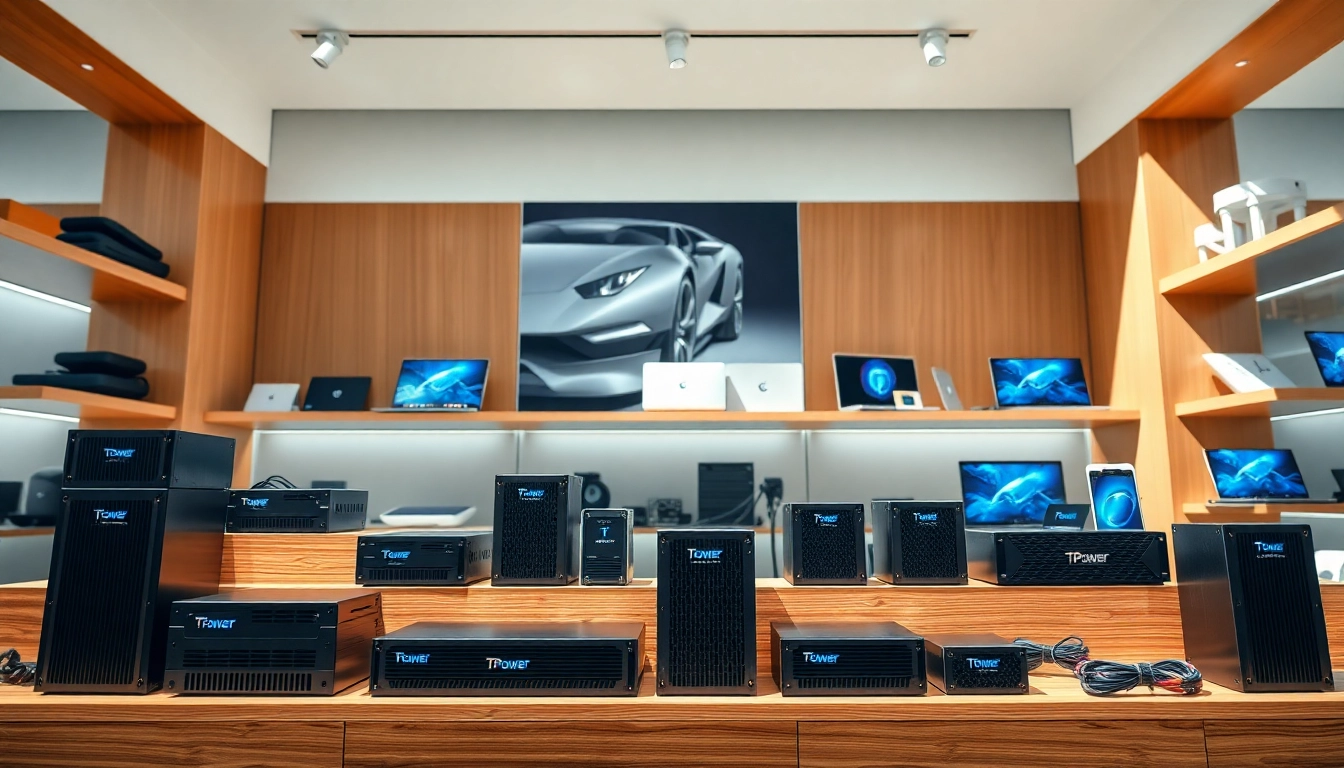Understanding the Virtual Audience System
Definition and Key Features
The Virtual Audience System (VAS) is an innovative platform designed to enhance the experience of live events by integrating digital participants alongside physical attendees. This system creates an interactive and engaging environment that allows virtual audiences to participate in real time, contributing to a more dynamic event atmosphere. Key features often include high-definition video streaming, live chat functionalities, real-time polling, and interactive content sharing, all tailored to ensure that remote participants feel included and valued.
Benefits for Events and Marketing
One of the most significant advantages of implementing a Virtual Audience System is its ability to expand the reach of events. By allowing individuals from various geographical locations to join virtually, organizers can increase attendance, enhance engagement, and ultimately drive greater ROI. In addition to broader reach, VAS facilitates cost-effectiveness by eliminating travel expenses for participants. Moreover, it provides detailed analytics regarding audience interaction, which can be leveraged for future marketing strategies and content development. Events are no longer confined to physical spaces, leading to an inclusive approach that benefits brands looking to innovate and attract diverse demographics.
Common Use Cases
The applications of a Virtual Audience System are vast and varied. Common use cases include:
- Corporate Conferences: Organizations utilize VAS to host annual meetings, team gatherings, or product launches, engaging remote employees and stakeholders effectively.
- Webinars: Educational institutions and businesses host online seminars that allow for interaction through Q&A sessions, chat features, and live feedback.
- Entertainment Events: Concerts and live performances have successfully incorporated audiences watching from home, integrating live chats and virtual applause.
- Workshops and Training: Companies can train employees using interactive sessions, allowing participants to engage in real-time discussions and hands-on activities despite being remote.
Implementing a Virtual Audience System
Step-by-Step Setup Guide
Implementing a Virtual Audience System requires careful planning and execution. Here’s a step-by-step guide to help ensure a smooth setup:
- Define Your Objectives: What do you hope to accomplish with a VAS? Identify specific goals such as increasing engagement, expanding reach, or improving feedback.
- Select the Right Tools: Choose a platform that suits your requirements, considering factors like audience size, interactive features, and budget.
- Integrate Technology: Ensure compatibility with existing systems and make necessary upgrades. This may include high-quality cameras, microphones, and streaming equipment.
- Design Your Event: Plan the flow of the event, including how virtual audiences will interact at different points. This could involve planning live polls, Q&A intervals, and interactive sessions.
- Test Your Setup: Conduct rehearsals with technical teams to troubleshoot potential issues before the event day.
- Launch and Engage: During the event, actively engage with both physical and virtual audiences to create a seamless experience.
- Collect Feedback: After the event, analyze attendee feedback and engagement metrics to inform improvements for future implementations.
Essential Tools and Technologies
To successfully implement a Virtual Audience System, various tools and technologies are indispensable:
- Video Streaming Software: Applications such as Zoom, Microsoft Teams, or specialized platforms like Hopin provide robust solutions for live streaming events.
- Audience Engagement Tools: Tools like Slido or Poll Everywhere facilitate real-time interaction through polls, Q&As, and live chats, driving engagement among participants.
- Event Management Software: Platforms such as Eventbrite or Cvent can assist in organizing registrations, ticketing, and participant communication.
- Polling and Feedback Tools: Immediate feedback can be gathered through dedicated tools, allowing organizers to refine ongoing events effectively.
Best Practices for Optimal Performance
To ensure optimal performance of a Virtual Audience System, consider the following best practices:
- Optimize for Connectivity: Ensure a reliable internet connection and test the setup before the event.
- Focus on Audio and Visual Quality: High-quality audio and video convey professionalism and enhance participant experience; invest in good microphones and cameras.
- Engage in Pre-Event Communication: Keep participants informed with schedules, instructions, and technological requirements ahead of time.
- Be Inclusive: Provide closed-captions and translation services if necessary to cater to diverse audiences.
- Rehearse Thoroughly: Conduct thorough practice runs to iron out technical hitches and boost confidence among presenters.
Engagement Techniques with a Virtual Audience
Interactive Features to Boost Participation
Engaging a virtual audience requires creativity and innovation. Here are several interactive features that can boost participation:
- Live Polls: These can be conducted during the event to gauge opinions and maintain engagement, allowing the audience to feel involved in the conversation.
- Q&A Segments: Allocating specific times for audience questions encourages participation and addresses their interests directly.
- Breakout Rooms: For larger events, small group discussions can foster engagement and connection among participants.
- Gamification: Incorporating game-like elements can incentivize participation, creating a fun and competitive atmosphere.
Measuring Engagement Success
To gauge the effectiveness of engagement strategies, the following metrics can be utilized:
- Participation Rate: Calculate the percentage of attendees who engage with interactive features like polls and chats to assess interest levels.
- Feedback Scores: Gather post-event surveys to understand attendee satisfaction, areas for improvement, and usability of tools.
- Audience Retention: Analyze how long participants stayed engaged during the event. Higher retention indicates effectiveness in keeping the audience engaged.
- Content Interactivity: Measure the frequency with which participants interact with shared content, helping identify what resonated.
Using Feedback for Continuous Improvement
Feedback plays a crucial role in the constant evolution of virtual audience systems. Implement the following strategies for incorporating feedback:
- Solicit Real-Time Feedback: Use live polls or feedback forms during the event to capture participant sentiments immediately.
- Post-Event Surveys: Sending out comprehensive surveys post-event helps gather insights on various aspects, including content, technology, and overall experience.
- Implement Changes: Show participants that their feedback is valued by making visible changes in subsequent events based on their recommendations.
- Benchmark Against Goals: Evaluate feedback against your initial objectives to understand what worked and what didn’t, allowing for targeted refinements.
Case Studies: Successful Virtual Audience Implementations
Corporate Events and Webinars
Many corporations have successfully harnessed the power of Virtual Audience Systems. A notable example is XYZ Corporation’s annual corporate conference, which transitioned from a traditional format to a hybrid model. With the integration of VAS, the company saw a 60% increase in attendance, with virtual participants actively engaging through live Q&As and polls, resulting in a wealth of data for follow-up marketing strategies.
Live Streaming and Entertainment
In the entertainment realm, artists have leverage VAS to reach broader audiences. A prime case is the live streaming of the annual Music Fest, which utilized a combination of social media platforms and dedicated streaming services. This innovative approach led to a doubling of fan engagement compared to previous years, with interactive chat features allowing fans to connect in real time.
Educational Platforms and Learning Experiences
Educational entities have embraced Virtual Audience Systems for remote learning experiences. For instance, a leading online university implemented a VAS during a major webinar series, encouraging real-time interaction through features like instant quizzes and breakout discussions. This engagement led to a significant increase in course enrollment and student feedback scores reflecting high satisfaction levels.
The Future of Virtual Audience Systems
Emerging Trends in Virtual Interaction
The landscape of virtual interactions is continually evolving, with several trends poised to shape the future of Virtual Audience Systems:
- Hybrid Events: As organizations realize the benefits of both in-person and virtual components, hybrid events are becoming the norm, allowing for tailored experiences based on attendee preferences.
- AR and VR Technologies: The integration of augmented and virtual reality is anticipated to revolutionize how audiences interact with events, providing immersive experiences that blur the lines between physical and digital realms.
- AI-Powered Engagement: Artificial intelligence will likely enhance personalization in future systems, offering tailored content recommendations and real-time interaction based on participant behavior.
Advancements in Technology
Technological advancements are essential for the evolution of Virtual Audience Systems:
- Improved Streaming Quality: As bandwidth increases, the quality of video and audio streaming will improve, making virtual experiences more enjoyable and effective.
- Enhanced Data Analytics: Future systems will offer in-depth analytics that not only measure engagement metrics but also provide actionable insights for improving future events.
- Smart Integrations: Systems will increasingly integrate with customer relationship management tools and social media platforms for seamless engagement tracking.
Preparing for Future Demands
To stay ahead of the evolving demands, organizations should focus on:
- Continuous Learning: Stay informed about technology trends and audience preferences to adapt quickly to changes.
- Investing in Infrastructure: Upgrade technical infrastructure to accommodate growing audience sizes and expectations surrounding virtual interaction.
- Flexibility: Cultivate an agile approach to event planning that accommodates feedback and integrates new technologies as they emerge.



